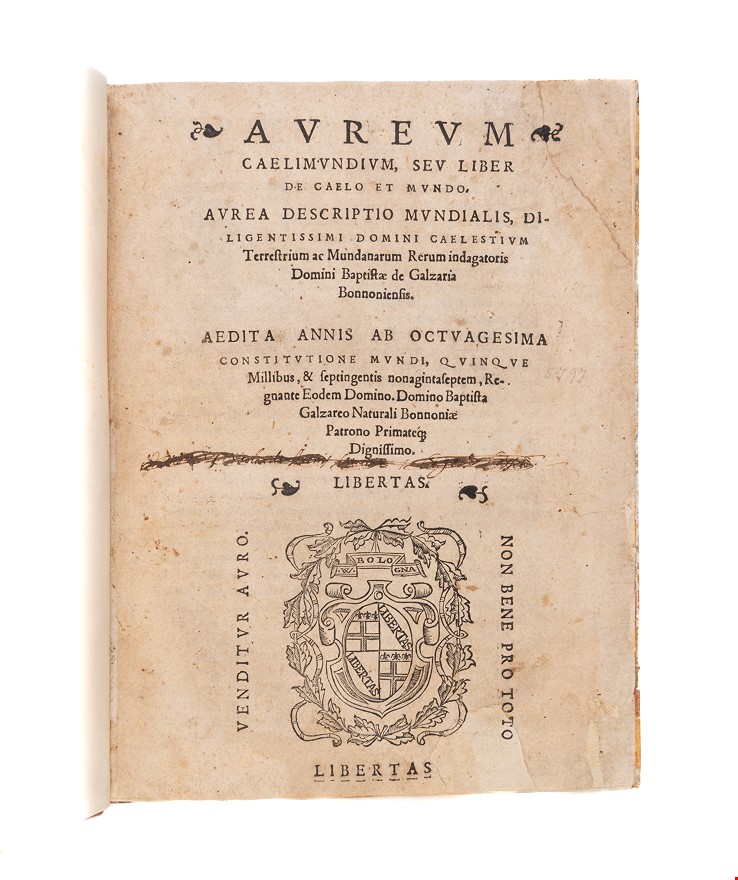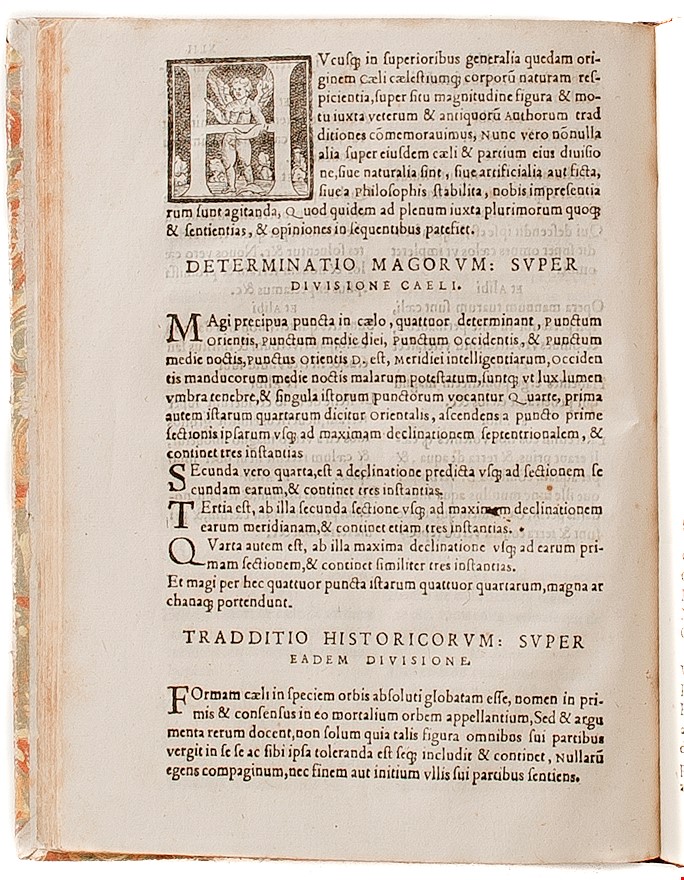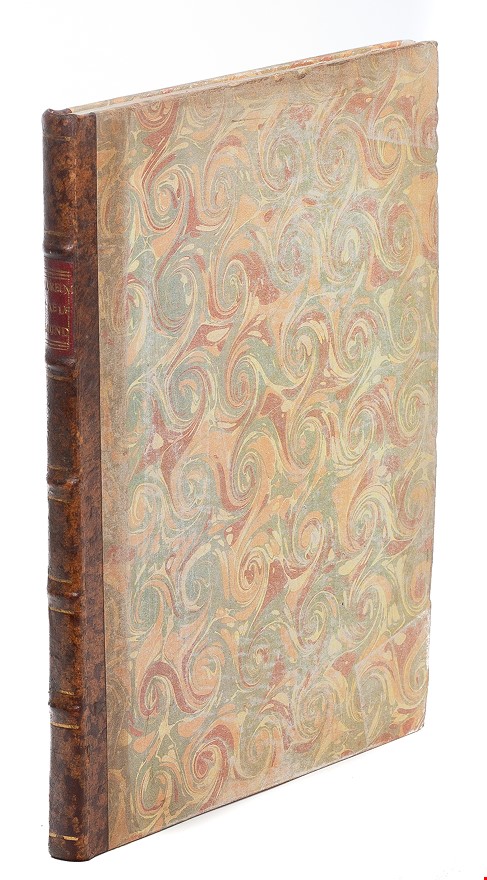Aureum caelimundium, seu liber de caelo et mundo.
GARGIARIA Battista (1569?].)
£2250.00
Please contact us in advance if you would like to view this book at our Curzon Street shop.
EXTREMELY RARE DIGEST ON THE NATURE OF HEAVEN AND EARTH
Aurea descriptio mundialis... aedita annis ab octuagesima constitutione mundi, quinque millibus, & septingentis nonagintaseptem [5797], regnante eodem domino.
Bologna device with motto 'libertas non bene pro toto venditur auro' on title-page, 20 8-line woodcut initials.
Folio (260 x 200mm). XXX, [4], XXX1-XLIIII, [2] (last leaf blank; penultimate leaf with errata (recto) and 'peroratio'). Antique style calf-backed marbled boards, red morocco label.
Extremely rare edition of the only published work of Battista Gargiaria listed by Censimento Edit 16. We can locate only one other copy outside Italy at the Bodleian Library, Oxford.
The author is generally described as a Bolognese jurist who flourished in the second half of the sixteenth century, but this may be a confusion arising from the fact that G. B. Gargiaria published several works on the law in Bologna in the mid 17th century. On the title to this work he is described as 'most diligent master and investigator of heavenly, terrestrial and universal [mundanarum] matters'. The book is described as published in the year of the world 5797. In the preface addressed to all those desirous to learn of natural things the author indicates that he has been prevented from publishing the book by various external forces but that now a happy conjunction of time and matter has enabled him to print it.
Gargiaria has compiled a digest of opinions (not one of them identified) on the physical nature of heaven and earth. The first section (ff. 2v-13v) discusses the 'entitas' of the heavens. There then follow (ff xiv-xxx plus [4] 'Opiniones de caelo multiformes et super quidditate eiusdem'. This consists of a large number of 3- or 4-line definitions, not one of them attributed to a name. He follows traditional Aristotelian distinctions so in the first part we have a wide range of views on the essence and "quiddity" of the heavens. There then (ff. xxxi -xxxvr) follow the views of philosophers, astronomers and others on the heavens, and of the poets ( ff. xxxvv-xxxvir, taken from Ovid Metamorphoses). The two Jewish views of heaven follow (xxxviv-xxxviiv) and these are two whole chapters (1 and 10) from Ezekiel in the Vulgate version. The seven heavens envisaged by muslim writers are briefly described and the commentator Alphachi (Alfasi?) is specifically mentioned, only to be refuted. There then follow short citations of Jewish and Christian authorities (taken from the O.T. and the N.T.), and on ff. xliiv- xlivr various opinions on the division of heaven. F. xlivverso is blank, , the next leaf has errata and register, and on the final verso is the Perorartio which states that the author has brought his task to completion.
Provenance: Early inscription on title-page inked out (Nicolai de Arenis?). Stamp on verso of final leaf, "Ex libris Prof. Romuli Meli Romae". Romulo Meli (1852-1921) was a noted Italian geologist and palaeontologist.
Title-page soiled with some paper repairs with two letters and a small piece of banner from the armorial device expertly replaced in manuscript, ff. XXXII-XXXIII heavily spotted.
Censimento Edit 16 CNCE 43850 (7 locations only).
Stock Code: 47240






